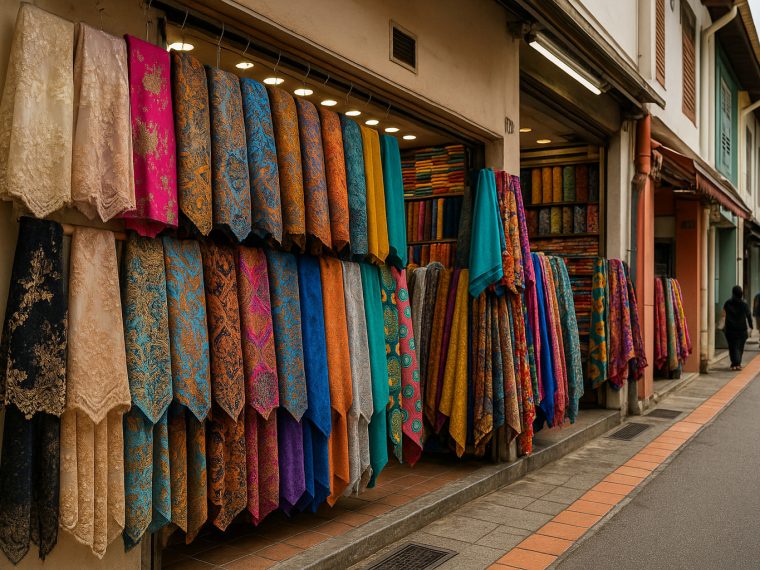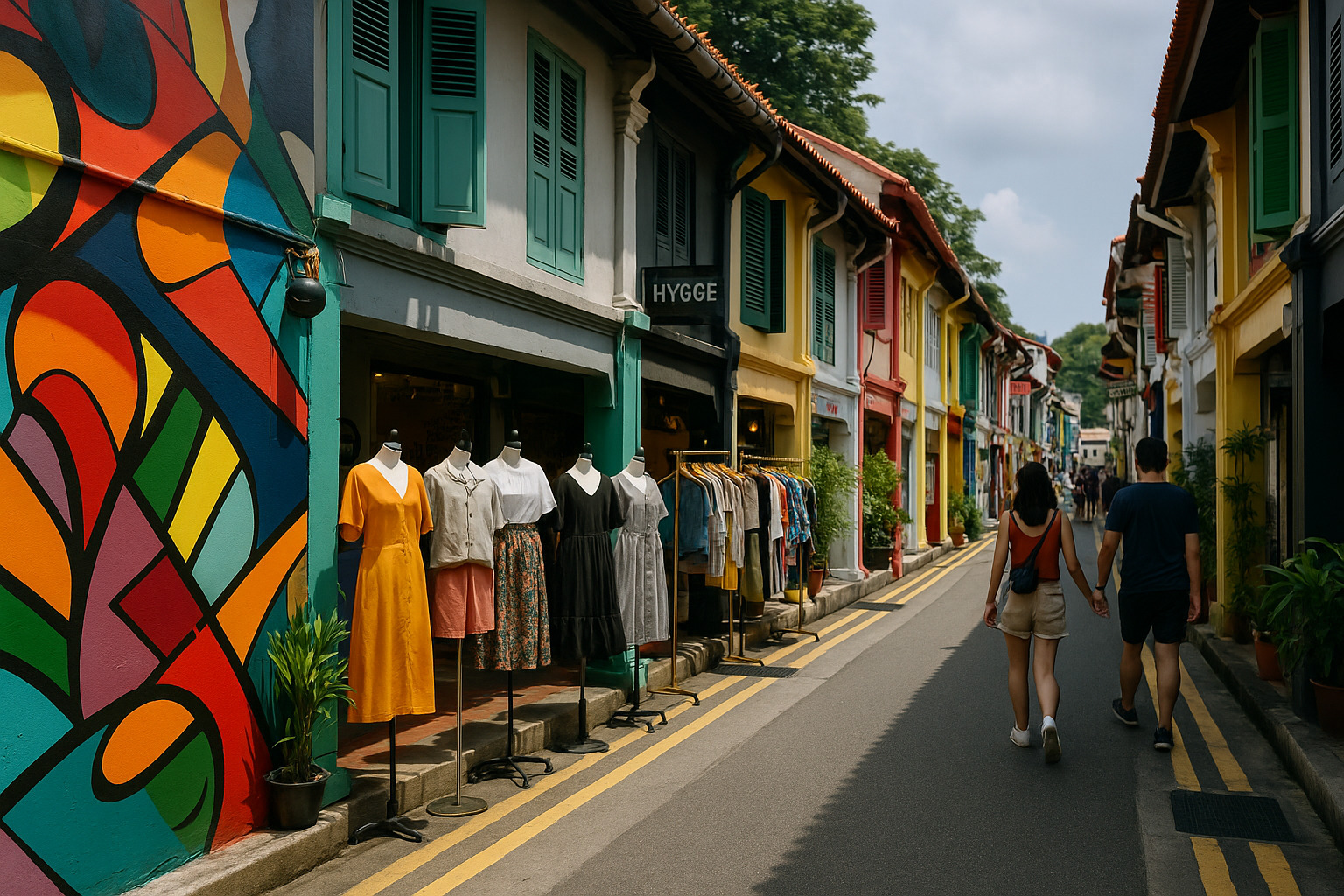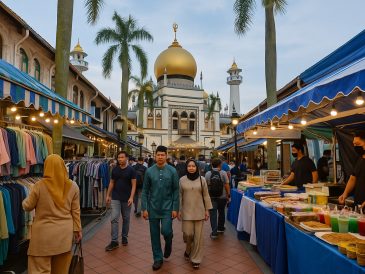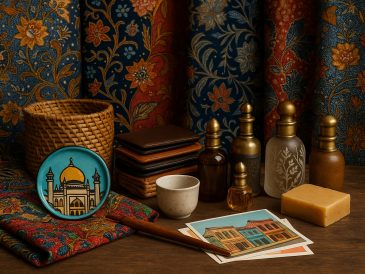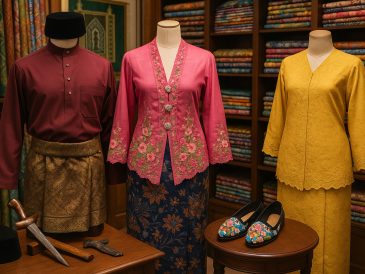Arab Street doesn’t just sell fabric. It wears it. Draped from shopfronts, coiled in tight spirals or sweeping in lazy folds, the street tells its story in silk, batik, cotton, and lace. Tourists snap photos. Locals know where to touch, ask, and haggle. The question isn’t whether to visit, but how to leave without a bag of fabric in hand.
A Fabric District With Character
Arab Street’s textile trade began long before Instagram did. Traders from the Middle East, India, and Indonesia brought textiles that told stories of royalty, weddings, prayer, and ceremony. Their descendants still run many of the shops today.
Each store is different—some specialize in bridal lace, others in batik, or in vibrant African wax prints. Shelves stretch from floor to ceiling, packed with material that caters to tradition and trend alike.
Types of Textiles You’ll Find
You won’t find mass-market polyester here. You’ll find fabrics that demand purpose. Some are bold and loud. Others are delicate and whisper-light. The street delivers range without losing quality.
Common fabric types sold include:
- Silk – Soft, smooth, and often hand-embroidered.
- Cotton – Breathable and ideal for custom garments or home use.
- Lace – Often used for weddings, with rich detailing and sheen.
- Batik – Hand-dyed fabric from Indonesia, deeply cultural.
- Songket – Traditional Malay fabric woven with gold or silver threads.
- Chiffon & Organza – Lightweight and popular for special occasions.
- Velvet & Brocade – Rich textures perfect for statement pieces.
- African Wax Prints – Bold colors with geometric patterns.
Each type serves a different function, but most shops will happily explain what works best for which use.
Best Shops to Visit on Arab Street
1. Royal Fabrics
Known for bridal lace, French tulle, and silk crepe. It’s a frequent stop for tailors and fashion students.
2. Toko Aljunied
One of the oldest fabric stores. Their collection of Songket and batik fabrics is respected across Southeast Asia.
3. Dilip Textiles
Extensive collection of raw silk, jacquard, and embroidered fabrics. The shop serves both individual buyers and costume designers looking for textured and decorative materials.
4. Gim Joo Textile Company
Known for its wide selection of quality cotton, linen, and traditional batik fabrics. The shop blends old-school charm with reliable service, attracting both seasoned tailors and casual hobbyists.
5. Warna Fabric
Specializes in colorful batik prints and modern textile designs, catering to both traditional dressmakers and contemporary designers.
Tips for Buying Fabric on Arab Street
• Ask to feel the fabric. Texture matters. No two rolls of chiffon behave the same.
• Don’t shy away from haggling. While prices are listed, many vendors are open to negotiation, especially for bulk buys.
• Measure before visiting. Know how many meters you need. Vendors cut fast and expect precise instructions.
• Bring a reference photo. If you’re planning a custom piece, visuals help.
• Ask about care. Some fabrics shrink. Some bleed color. Some require dry-cleaning.
• Buy a little extra. Mistakes happen during tailoring. A few extra centimeters can save you later.
Why Arab Street Still Matters
It remains one of the few places in Singapore where the fabric trade is tangible, social, and slow in all the right ways. Shopkeepers remember regulars. Patterns change with seasons, but relationships don’t.
There’s no sterile shopping cart or barcode scanner. Just hands, eyes, and voices. Arab Street lets you pick your color, feel your material, and negotiate your price—all before lunch.
What to Pair Your Visit With
- Haji Lane – A short walk away and filled with indie shops and cafes.
- Sultan Mosque – A photographic landmark and cultural hub.
- Bussorah Street – For traditional wear, perfumes, and carpets.
- Textile Centre – For zippers, buttons, and sewing tools.
Final Thought
Arab Street isn’t just a fabric hub. It’s a neighborhood that has wrapped culture, commerce, and craftsmanship into its storefronts for generations. Anyone can browse fabric. Here, you connect with it.
